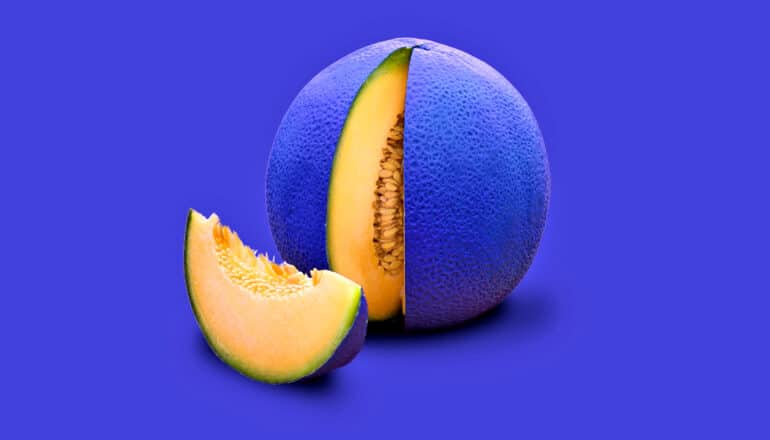
Ultraviolet light could offer a way to control powdery mildew, a disease that can damage or kill cantaloupe plants.
Even with fungicides, producers struggle to control powdery mildew. The new study in Plant Disease shows that UV light can zap the pathogen on the plants without damaging them.
“Powdery mildew is one of the most common and severe diseases of cucurbits worldwide,” says Natalia Peres, a plant pathology professor at the University of Florida Institute of Food and Agricultural Sciences (UF/IFAS). “It can be a major disease on cantaloupes grown in Florida, although there are some cultivars that tolerate it better.”
The USDA NASS State Agriculture Overview for Florida shows that the state’s growers harvested 1,500 acres of cantaloupe in 2021. That’s about 375,000 pounds, worth just under $10 million annually. Nationally, growers produced cantaloupes worth $277,503,000 in 2021.
Powdery mildew can survive natural UV light in sunlight. So, the disease can fight the natural UV light of daytime, but not at night.
“If we applied UV light during the day, we would need to use higher doses to get the same effect,” Peres says. “However, these natural defenses are not active at night, so by applying UV light at night, we can bypass the natural defenses of the pathogen and kill it with lower doses that we would need during the day.”
That’s why scientists put an ultraviolet lamp behind a tractor, drove it onto the UF/IFAS Gulf Coast Research and Education Center (GCREC) research farm once or twice a week at night, pointed the light at the cantaloupe, and struck the mildew out of the plant.
“Our unit was built in a shop by one of our strawberry growers,” Peres says. “Similar and bigger units could be designed and built for growers to use at their farms.”
No commercial units are yet available for field applications, but there is a lot of research recently on the use of UV light in agriculture systems.
Peres has already shown the UV light can work to suppress powdery mildew in strawberries, a $300 million annual crop in Florida.
She hopes these findings give a ray of hope to cantaloupe farmers across the globe.
“The UV light may be a practical approach to suppress powdery mildew in cantaloupe with the potential to reduce disease severity without damaging the plants or decreasing yield,” Peres says.
“We are very limited in the number of types of fungicides available to control this and other diseases. Additionally, pathogens are acquiring resistance to some of these fungicides, so we need alternative methods.”
Additional coauthors contributed from Universidade Federal do Agreste Pernambuco in Brazil.
Source: University of Florida
The post UV light at night protects cantaloupes from pathogen appeared first on Futurity.
from Futurity https://ift.tt/Bj6AldO
No comments:
Post a Comment